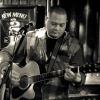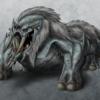Beginners Tutorial - Opinions needed
Hi,
I'm just looking for some opinions on a tutorial I wrote the other night. It's a very basic tutorial aimed at the beginner sound designer. It's really there just to get someone started in sound design after I found a number of sound 'artists' who were just ripping audio from other sources.
What I need to know is, is there anything missing, that should be put in? Is it too obvious and therefore pointless?  www.rattic.co.uk/tutorials/
Cheers
Dave
[edited by - rhythm_attic on February 20, 2004 7:01:05 AM]
www.rattic.co.uk/tutorials/
Cheers
Dave
[edited by - rhythm_attic on February 20, 2004 7:01:05 AM]
---------------------Dave HaslamComposer/Sound Designer/ProducerRhythm-Attic Studioswww.rattic.co.uk
Good Stuff, we need more "educate the masses in simple speak" stuff out there. As usual, I do have comments. (I''m typing these as I read your tutorial, so I don''t know how many there are gonna be  )
)
Equipment
1) It''s known in professional circles as an 1/8th" connector. Not Mini-Jack. Though everyone does know what you mean when you say mini-jack.
2) DigiDesign released a version of ProTools (ProToolsFree) that, as the name suggests, is completely free. The only restrictions are on Plug-ins and Max number of Audio tracks. It''s only compatible with certain OS'' though.
Editing/Recording
1) "Aim mic, press record" leaves out a few fundamental steps. First you have to setup your channel input (where is the sound coming from digitally?), then you have to arm the track.
2)Just as a side note, some digital audio stations work like analog recording devices in that you press record first, then play (or at the same time with analog, but we have 10 fingers and only one mouse, so it''s been adapted).
3) When saving as a stereo file, save as "Stereo Interleaved" whenever possible, rather than "Joint Stereo" or somesuch.
4)Generally, you won''t be saving higher than studio quality if you''re a beginner, save yourself the HD space.
~~Side note:
Nyquist''s Theorum states that the sample rate of digitally recorded audio must be twice that of the highest frequency being recorded.
}}Example: Rock band recording, highest frequeny - 16kHz. The sample rate must then be at least 36kHz. The next standard sample rate above that is 44.1 so always go up.
}}Example2: A male poetry reading, highest frequency - 3kHz. The sample rate must then be at least 6kHz. The next standard sample rate above that is 22.05.
5) 0dB is not the point of clipping. In audio 0dB means "No Change from Input Signal". A good rule of thumb to go by in digital recording would be say, "never more than +10" which I believe is the avg capacity of most programs.
That pretty much covers it from my end. Great prep paper though!! I''d have used it a few years ago.
RM
Equipment
1) It''s known in professional circles as an 1/8th" connector. Not Mini-Jack. Though everyone does know what you mean when you say mini-jack.
2) DigiDesign released a version of ProTools (ProToolsFree) that, as the name suggests, is completely free. The only restrictions are on Plug-ins and Max number of Audio tracks. It''s only compatible with certain OS'' though.
Editing/Recording
1) "Aim mic, press record" leaves out a few fundamental steps. First you have to setup your channel input (where is the sound coming from digitally?), then you have to arm the track.
2)Just as a side note, some digital audio stations work like analog recording devices in that you press record first, then play (or at the same time with analog, but we have 10 fingers and only one mouse, so it''s been adapted).
3) When saving as a stereo file, save as "Stereo Interleaved" whenever possible, rather than "Joint Stereo" or somesuch.
4)Generally, you won''t be saving higher than studio quality if you''re a beginner, save yourself the HD space.
~~Side note:
Nyquist''s Theorum states that the sample rate of digitally recorded audio must be twice that of the highest frequency being recorded.
}}Example: Rock band recording, highest frequeny - 16kHz. The sample rate must then be at least 36kHz. The next standard sample rate above that is 44.1 so always go up.
}}Example2: A male poetry reading, highest frequency - 3kHz. The sample rate must then be at least 6kHz. The next standard sample rate above that is 22.05.
5) 0dB is not the point of clipping. In audio 0dB means "No Change from Input Signal". A good rule of thumb to go by in digital recording would be say, "never more than +10" which I believe is the avg capacity of most programs.
That pretty much covers it from my end. Great prep paper though!! I''d have used it a few years ago.
RM
Cheers m8!
Thanks for your feedback! I''ve pretty much added all of your points. The only things I didnt change/add were:
Nyquist''s Theorum - I think this might be a bit too complicated for a ''basic'' tutorial?
0dB "No Change from Input Signal". Hmm, I was always taught that 0dB is the point at which clipping/distortion will occur. But I checked on Google and found that both are mentioned :s Anyone else have any input on this?
Let me know your name and I''ll list you on the tutorial with a special thanks
Cheers
Dave
Thanks for your feedback! I''ve pretty much added all of your points. The only things I didnt change/add were:
Nyquist''s Theorum - I think this might be a bit too complicated for a ''basic'' tutorial?
0dB "No Change from Input Signal". Hmm, I was always taught that 0dB is the point at which clipping/distortion will occur. But I checked on Google and found that both are mentioned :s Anyone else have any input on this?
Let me know your name and I''ll list you on the tutorial with a special thanks
Cheers
Dave
---------------------Dave HaslamComposer/Sound Designer/ProducerRhythm-Attic Studioswww.rattic.co.uk
No problem! Check my Profile for my name. Post here again if you write a second one!
February 23, 2004 09:07 AM
the 0dB thing is different depending on what it is you''re talking about, analog or digital, mixer or recorder.
February 26, 2004 01:20 PM
The 0 dB you are thinking about is 0 DBFS, or decibels below full scale.
Decibels are a relative scale, that is, they are a measure in reference to a standard.
For example, a +4 dB reference level (for balanced professional audio) refers to a signal which is 4 dB hotter than the 0 dB reference level of .775 Volts (the RMS value for a 1 V peak to peak sine wave - if this doesn''t make sense, don''t worry about it),, about 1.2 Volts RMS.
RelativeMischief, are you referring to 0 dB as No Input?
BTW, when normalizing, it''s better to set the maximum level to slightly below full scale, say .3 dB.
Some D/A converters don''t handle full scale very well (maybe yours do... but maybe not someone who hears your stuff later)
Anyway, good job, and have fun with it.
Michael Klinowski
Shinnyo Interactive Audio
michael@shinnyointeractiveaudio.com
Decibels are a relative scale, that is, they are a measure in reference to a standard.
For example, a +4 dB reference level (for balanced professional audio) refers to a signal which is 4 dB hotter than the 0 dB reference level of .775 Volts (the RMS value for a 1 V peak to peak sine wave - if this doesn''t make sense, don''t worry about it),, about 1.2 Volts RMS.
RelativeMischief, are you referring to 0 dB as No Input?
BTW, when normalizing, it''s better to set the maximum level to slightly below full scale, say .3 dB.
Some D/A converters don''t handle full scale very well (maybe yours do... but maybe not someone who hears your stuff later)
Anyway, good job, and have fun with it.
Michael Klinowski
Shinnyo Interactive Audio
michael@shinnyointeractiveaudio.com
This topic is closed to new replies.
Advertisement
Popular Topics
Advertisement
Recommended Tutorials
Advertisement








